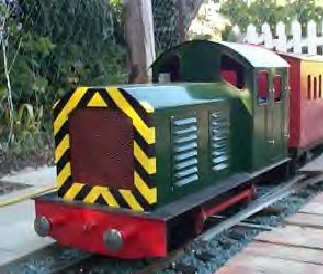|
What is a Trojan Loco?
Sharp corners and steep gradients on a garden railways create a great stain on engines. Un like many club tracks the garden railway will often involve hard acceleration and deceleration with little free running. This put a lot of strain on our two Bulldog loco's, so constant checking of the control board and motors coupled with regular breaks were necessary to avoid overheating - something that wasn't necessary when running on a club track.
|
| |
The principle behind the loco is to over power it, to avoid strain on both control board and motors. If you try to pull too big a load all that will happen is the wheels will slip. So far even with too heavier load we have only managd to get the motors and control board luke warm. |
 BIG PLUS POINTS
BIG PLUS POINTS
# Easy maintenance and repair
# Simple rigid construction
# Great base to start detailing
# No worry about over loading
# Keeping cost down by using car batteries ! ! !
# Designed to take market leading control board ! ! !
# Online instructions! ! !
# Just plug in and go! ! !
|
| |
Power is 24v from two 12v car batteries powering 4 motors (in parallel ie. 24v each). I have to recommend leisure or traction batteries, as car batteries are not designed for constant current drain. That point raised our car batteries have given over 2 years good service - your choice. |
|
|
| |
Left - The four motors fitted provide more than enough power for those occasionally overloaded trains. Removal of motors can be done without having to split or remove the wheel sets.
Should you ever wish to take the wheel sets out simply remove the eight bolts in the horn block guides and the set simply slides out.
|
|
|


